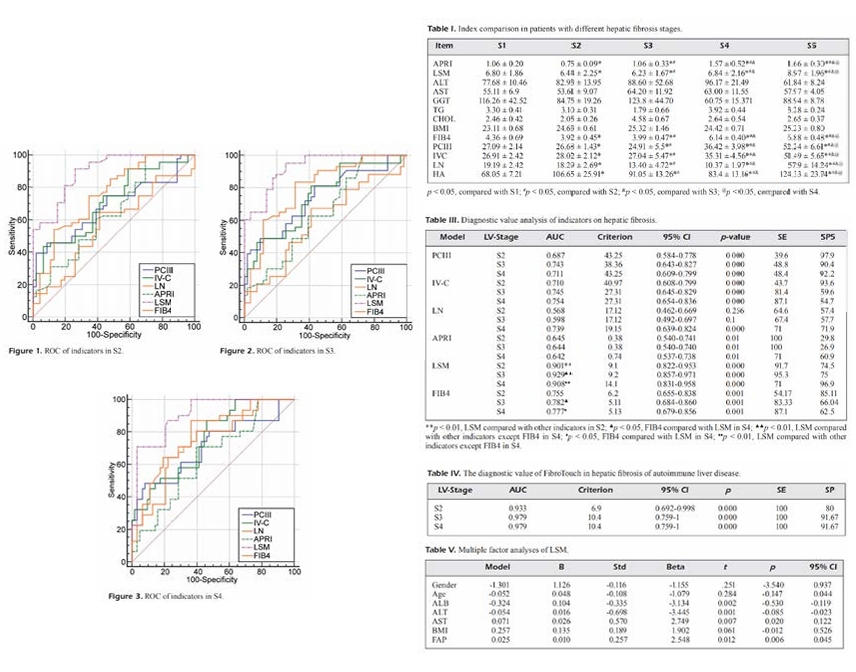
•95 patients with liver biopsy. Routine clinical and laboratory examinations were collected, including age, sex, blood routine, biochemistry, serum fibrosis, and FibroTouch.
•APRI and FIB4 scores were calculated.
•Patients were grouped according to liver pathological staging to analyze the correlation between the fibrosis with serum fibrosis, APRI, FIB4 score, and FibroTouch.
•The receiver operator characteristics of S2, S3, and S4 were analyzed to calculate the area under the curve (AUC).

•No statistical difference was found on age, ALT, AST, GGT, BMI, TG, CHOL, and Glu (p > 0.05). Liver stiffness measurement (LSM), APRI, FIB4, PCIII, CIV, LN, and HA exhibited statistical significance (p < 0 .05).
•PCIII, IV-C, LN, APRI,LSM, and FIB4 were positively correlated with the stage of hepatic fibrosis (p < 0.05).
•ROC curve analysis demonstrated that LSM and FIB4 revealed good predictions of various stages of fibrosis in chronic liver disease with AUC greater than 0.7.
•The AUC of LSM in the diagnosis of liver cirrhosis (S4) reached 0.908.
•Its accuracy was influenced by liver inflammation.
•LSM is a valuable noninvasive method for assessing the progression of hepatic fibrosis in chronic liver disease.
